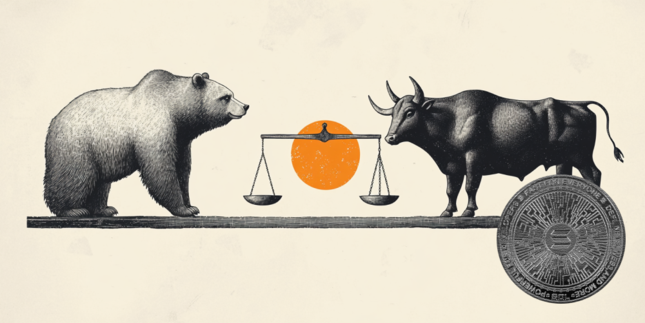- Silver price falls back to near $31.50 after posting a fresh two-week high around $32.20.
- Chinese officials proposed to increase the issuance of bonds to boost infrastructure investment.
- The US producer inflation grew at a faster-than-expected pace in November.
Silver price (XAG/USD) gives up its entire gains and declines to near $31.50 in the North American session on Thursday. The white metal declines after posting a fresh two-week high around $32.20. The asset faces pressure after the conclusion of China’s two-day economic work conference. a high-level meeting that sets economic priorities for next year.
Top leaders of China didn’t provide specific details on the likely size of the stimulus package and the pace of monetary policy easing. However, officials said that they will increase the issuance of ultra-long special treasury bonds and local government special notes next year, which are important sources for infrastructure investment and other public spending, Bloomberg reported.
Investors await more details on the stimulus package to forecast the demand for Silver, given its application in various industries such as solar panels and mining, etc.
Meanwhile, hotter-than-expected United States (US) Producer Price Index (PPI) data for November has also weighed on the Silver price. As measured by the PPI, annual headline and core producer inflation accelerated to 3% and 3.4%, respectively. The impact of the hit US PPI data appears to be negligible on Federal Reserve (Fed) interest rate projections for the policy meeting on December 18 but could boost expectations that the central bank will pause the policy-easing spell in January.
After the US PPI data release, the US Dollar Index (DXY) recovered intraday losses and rises to near 106.80 and weighed on the Silver price.
Silver technical analysis
Silver price retreats after failing to revisit the horizontal resistance plotted from the May 21 high of $32.50. The near-term appeal of the Silver price remains firm until it stays above the 20-day Exponential Moving Average (EMA), which trades around $31.25.
The 14-day Relative Strength Index (RSI) approaches 60.00. A bullish momentum would trigger a decisive break above the same.
Looking down, the upward-sloping trendline is around $29.50, which is plotted from the February 29 low of $22.30 on a daily timeframe
Silver daily chart
Silver FAQs
Silver is a precious metal highly traded among investors. It has been historically used as a store of value and a medium of exchange. Although less popular than Gold, traders may turn to Silver to diversify their investment portfolio, for its intrinsic value or as a potential hedge during high-inflation periods. Investors can buy physical Silver, in coins or in bars, or trade it through vehicles such as Exchange Traded Funds, which track its price on international markets.
Silver prices can move due to a wide range of factors. Geopolitical instability or fears of a deep recession can make Silver price escalate due to its safe-haven status, although to a lesser extent than Gold's. As a yieldless asset, Silver tends to rise with lower interest rates. Its moves also depend on how the US Dollar (USD) behaves as the asset is priced in dollars (XAG/USD). A strong Dollar tends to keep the price of Silver at bay, whereas a weaker Dollar is likely to propel prices up. Other factors such as investment demand, mining supply – Silver is much more abundant than Gold – and recycling rates can also affect prices.
Silver is widely used in industry, particularly in sectors such as electronics or solar energy, as it has one of the highest electric conductivity of all metals – more than Copper and Gold. A surge in demand can increase prices, while a decline tends to lower them. Dynamics in the US, Chinese and Indian economies can also contribute to price swings: for the US and particularly China, their big industrial sectors use Silver in various processes; in India, consumers’ demand for the precious metal for jewellery also plays a key role in setting prices.
Silver prices tend to follow Gold's moves. When Gold prices rise, Silver typically follows suit, as their status as safe-haven assets is similar. The Gold/Silver ratio, which shows the number of ounces of Silver needed to equal the value of one ounce of Gold, may help to determine the relative valuation between both metals. Some investors may consider a high ratio as an indicator that Silver is undervalued, or Gold is overvalued. On the contrary, a low ratio might suggest that Gold is undervalued relative to Silver.
Information on these pages contains forward-looking statements that involve risks and uncertainties. Markets and instruments profiled on this page are for informational purposes only and should not in any way come across as a recommendation to buy or sell in these assets. You should do your own thorough research before making any investment decisions. FXStreet does not in any way guarantee that this information is free from mistakes, errors, or material misstatements. It also does not guarantee that this information is of a timely nature. Investing in Open Markets involves a great deal of risk, including the loss of all or a portion of your investment, as well as emotional distress. All risks, losses and costs associated with investing, including total loss of principal, are your responsibility. The views and opinions expressed in this article are those of the authors and do not necessarily reflect the official policy or position of FXStreet nor its advertisers. The author will not be held responsible for information that is found at the end of links posted on this page.
If not otherwise explicitly mentioned in the body of the article, at the time of writing, the author has no position in any stock mentioned in this article and no business relationship with any company mentioned. The author has not received compensation for writing this article, other than from FXStreet.
FXStreet and the author do not provide personalized recommendations. The author makes no representations as to the accuracy, completeness, or suitability of this information. FXStreet and the author will not be liable for any errors, omissions or any losses, injuries or damages arising from this information and its display or use. Errors and omissions excepted.
The author and FXStreet are not registered investment advisors and nothing in this article is intended to be investment advice.
Recommended content
Editors’ Picks

EUR/USD retreats from fresh multi-year highs, holds above 1.1000
EUR/USD neared 1.1150 in the European session on Thursday, shedding roughly 100 pips afterwards. The Euro holds on to solid gains amid broad US Dollar weakness, after US President Trump unveiled aggressive tariffs on the "Liberation Day." Markets await mid-tier US data releases.

GBP/USD surges to multi-month tops near 1.3200 ahead of US data
GBP/USD paused its rally after briefly surpassing the 1.3200 mark, yet holds on to most of its intraday gains. The US Dollar plunged to a fresh YTD low amid worries about a tariff-driven US economic slowdown, lifting Fed rate cut bets and weighing on the Greenback. The focus now remains on the US data for further impetus.

Gold retreats below $3,100 from all-time peak
Gold price extends its steady intraday pullback from the all-time peak touched this Thursday, and pierces the $3,100 mark in the European session. Bullish traders opt to take some profits off the table and lighten their bets around the commodity amid slightly overbought conditions.

SOL is the winner as Solana chain turns into battleground for meme coin launchpad and DEX
Solana (SOL) gains nearly 2% in the last 24 hours and trades at 118.28 at the time of writing on Thursday. A Decentralized Exchange (DEX) and a meme coin launchpad built on the Solana blockchain have waged a war for users and compete for the trade volume on the chain.

Trump’s “Liberation Day” tariffs on the way
United States (US) President Donald Trump’s self-styled “Liberation Day” has finally arrived. After four straight failures to kick off Donald Trump’s “day one” tariffs that were supposed to be implemented when President Trump assumed office 72 days ago, Trump’s team is slated to finally unveil a sweeping, lopsided package of “reciprocal” tariffs.

The Best brokers to trade EUR/USD
SPONSORED Discover the top brokers for trading EUR/USD in 2025. Our list features brokers with competitive spreads, fast execution, and powerful platforms. Whether you're a beginner or an expert, find the right partner to navigate the dynamic Forex market.


